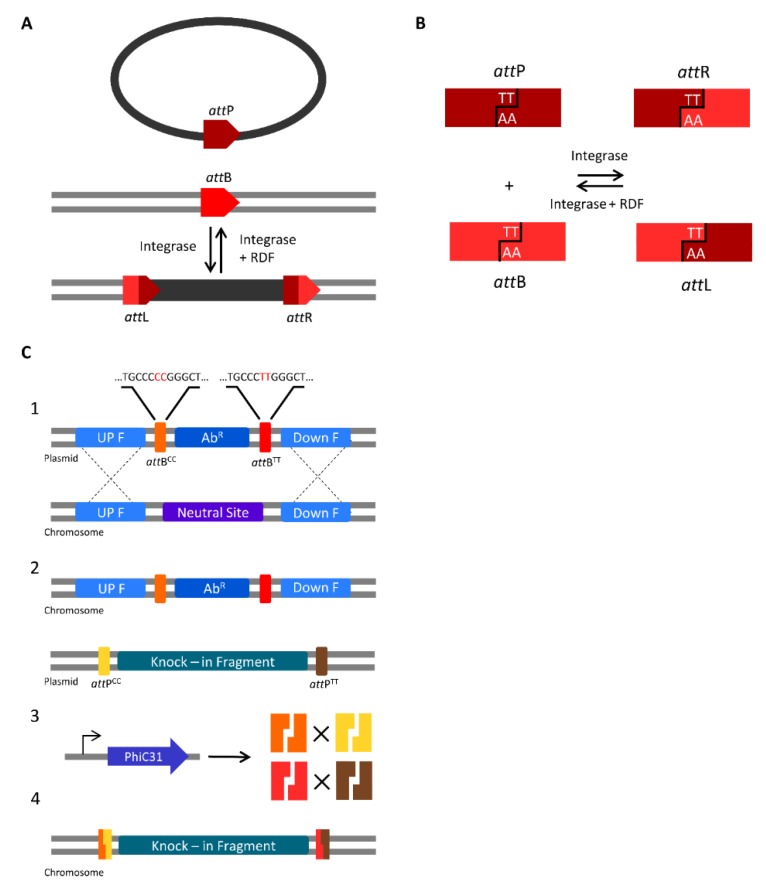Figure 2.
Mechanism of action of serine integrases and knock-in strategies. (A) DNA rearrangement with serine integrases: attB and attP sites recombine to make attL and attR sites. In the presence of the cognate recombination directionality factor (RDF), the reaction is reversed [124]. (B) The serine integrases bind to the attP and attB sites, generate a staggered 2 bp cut to produce two halves at each site, and then rotate to swap the two halves from each site. If the halves are complementary, relegation occurs to generate attL and attR sites. (C) A serine integrase-mediated knock-in strategy for cyanobacteria. Integration of a landing pad (the landing pad shown carries orthogonal attBCC and attBTT sites) occurs by homologous recombination (HR) at a neutral site in the cyanobacterial chromosome (C1). A self-replicating vector carrying the donor DNA fragment flanked by attPCC and attPTT sites and a PhiC31 integrase expression cassette is introduced into the cyanobacterial strain (C2). Expression of PhiC31 integrase results in the recombination of the orthogonal attB and attP pairs (C3), replacing the “landing pad” with the donor DNA to generate an unmarked knock-in mutant (C4).

